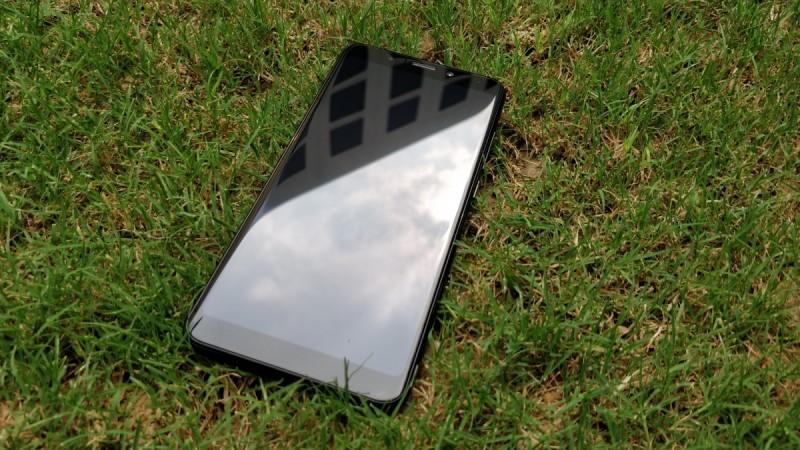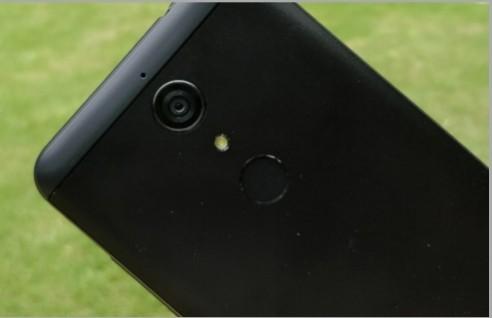Chinese brands like Xiaomi, Lenovo and Coolpad have been changing the playing field for budget phones in India for some time now. While many brands have come and gone, one particular company — and a quite popular one at that – has been a spectator of these evolutions: Micromax.
After studying trends, the homegrown phonemaker has stepped up its game and launched a series of phones to stay a part of the race. And it has made a significant leap forward with the launch of the Canvas Infinity.
The first impressions of the phone have been nothing short of impressive, and it's time for the full review.
Micromax Canvas Infinity was launched last week at an event in New Delhi, and we've been using the phone ever since. During our review, a lot of details about the Canvas Infinity have revealed themselves, and we will share them here to help you decide whether this phone is a must-buy.

Our first impressions of the Canvas Infinity's design haven't changed even after a week of using it. In fact, the handset's 18:9 aspect-ratio screen grows on you over time. And if you're a movie buff or like playing games on the phone, the Canvas Infinity is a safe consideration.
In our previous article, we'd mentioned that the Canvas Infinity's design is its impenetrable armour and the one aspect that would guarantee its success. A week later, it's a reassurance that the Canvas Infinity is definitely a charmer. But we had the chance to look deeper into the display and its practicality.
It's a dangerous balance for the Canvas Infinity's display. On one hand it delivers a visually appealing look, but on the other it fades on the resolution part. The Canvas Infinity comes with HD+ resolution with 720x1440 pixels, and the faded resolutions become apparent when watching a high-res movie or playing a high-graphics game on the phone. As for daily usage, we do not argue over its performance, as it can be used indoors and outdoors without straining the eyes.

Turn the phone over to its back, and you'll find a lot of plastic. The removable plastic back cover with removable battery is something we no longer see in smartphones, but it is convenient to replace a battery when its performance wears off. Under that hood, there are two dedicated microSIM card slots (not nano SIMs) along with a microSD card slot, which is yet another rarity these days.

There is a fingerprint scanner at the back of the phone that works seamlessly. There is a bit of lag while authenticating the registered fingerprint and unlocking the phone for use, but it isn't too obvious. Accuracy of the fingerprint scanner is ideal most of the time.

After we've evaluated the design and display of the Canvas Infinity, let's take a dip inside the performance of the phone.
Performance
Micromax Canvas Infinity is powered by a Snapdragon 425 chipset paired with 3GB RAM. The octa-core chipset is ideal for day-to-day usage, but falters on heavy tasks. Multi-tasking is not at its best, but it can work with 5-6 apps simultaneously without lags.
If you are running a high-GPU game like Asphalt, make sure you have minimum background activity or you'll get some stutter. If you stick to low-end and mid-level games, you'll find Canvas Infinity on a par with most rivals in its price range.

As for the software, the handset runs Android Nougat 7.1.2 with a custom skin on top. We were quite impressed by the look of the UI, which is simple and mimics iOS to an extent. There are smart gestures like double tap to lock the phone and others to interact with the phone in a better way.

To add to your excitement, the Canvas Infinity will receive Android Oreo once the update is widely available.
Battery
Micromax Canvas Infinity comes with a 2,900mAh battery, which we found quite surprising as other phones in its price range pack cells of 4,000mAh capacity. We were sceptical the phone would last a full day of average use, and to our surprise the Canvas Infinity did!

The Canvas Infinity lasted up to 8 hours of mixed usage, which included constant 4G LTE connection, calls, messages and social networking. If you do a lot of gaming on the phone or watch movies and TV series via Netflix or Hotstar, expect the battery levels to drop sooner.
While Micromax surprised us with its phone's battery life, disappointment followed with its charging time. After the battery was drained, it took us up to 3 hours to fully charge the phone.
Camera
Another interesting aspect of the Canvas Infinity is its camera. The 13MP rear-facing camera with f/2.0 aperture and a 16MP front snapper with LED flash are bundled with new and unique features.
The highlight is the use of Portrait mode, which creates an artificial Bokeh effect by blurring the background on both cameras. This is made possible without dual cameras on either side of the phone. Considering this, the results are pretty decent. The Portrait mode also lets you adjust the intensity of the blurriness of the background, which comes in handy.

Micromax has also added Super Pixel mode, which isn't new but certainly adds value by capturing details without distortion. Other useful modes in the camera include scenes, which creates artificial scenes, night mode and QR scanner.

The rear camera performance on the phone given its pricing is acceptable. The details are lost in low-light conditions and the colours don't stay true, but that's something you'll have to settle with any budget smartphone.
The selfie camera is superior to the rear, making it ideal for those who like to use various filters and modes available in the phone to capture good selfies.
We've captured a few samples of the images for you to evaluate the camera yourselves.
Verdict
Micromax Canvas Infinity is priced at Rs 9,999. Based on this factor, it is safe to conclude that buyers can get maximum value out of this budget smartphone.
The design of the phone is definitely the primary reason why you should go for it, as no other brands offer 18:9 aspect ratio displays at such low price.
The rest of the specs of the phone have been designed to match other sub-Rs 10,000 smartphones, if not outperform them. In our view, the Canvas Infinity faces stiff challenge from Xiaomi Redmi Note 4.























